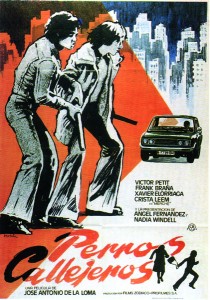

Cartografies en moviment (Cartografías en movimiento) proposes to a group of 35 students from the 1st year of Artistic Baccalaureate of
IES Bellvitge
and their tutor, Ana Recio, to collectively create a cartography of the institutions, practices, and cultural experiences in the neighborhood of Bellvitge (L’Hospitalet). This cartography will be based on collective research work and by working groups.
The proposal is part of a series of actions and collaborations that we will develop in Bellvitge during 2013 and in view of the year 2015, the date on which the neighborhood’s 50th anniversary will be celebrated. On the occasion of this celebration, several entities in the neighborhood are preparing various actions within the framework of a historical memory program to which we want to add initiatives such as Cartografies en moviment. The process and the result of Cartografies en moviment will also enter into dialogue with the project
¡Cataluña termina aquí!¡Aquí empieza Murcia!
del colectivo
Sitesize
, as well as with the experiences and groups that make up the platform
Aula a la deriva 2012
. In March 2013, the exhibition hall of
L’harmonia
as a place from which to share the work done and facilitate new connections with citizens.
APPROACH AND CONTEXT OF THE PROPOSAL
The neighborhoods of Bellvitge and Gornal de L’Hospitalet -like others in the metropolitan area of Barcelona- are areas that have long been stigmatized; often for dragging an imaginary linked to the conditions in which they were built, the result of massive migratory processes that led to shanty towns and difficult living conditions.
This situation of impoverishment in the 40s translated in the 60s and 70s into the perception of these neighborhoods as dangerous and marginal, a fact to which the mass media such as cinema, the press or television contributed (in 1977
 Currently, the struggle of neighbors in the demand for equipment is usually recognized as the key to ensuring that these territories do not become ghettos. In January of this year (2012), the newspaper El Periódico published an article entitled
Currently, the struggle of neighbors in the demand for equipment is usually recognized as the key to ensuring that these territories do not become ghettos. In January of this year (2012), the newspaper El Periódico published an article entitled
El milagro de Bellvitge
in which one could read: «The metamorphosis of the neighborhood of L’Hospitalet is an example of how to combat marginalization» and in which this fact was reasoned by remarking the importance of the associative fabric.
The current situation of systemic plundering once again endangers these communities: austerity policies lead to the cancellation of cultural programs and the closure of facilities or to keeping them to a minimum. We believe it is necessary for citizens to organize and raise awareness of this situation, and to put into practice new forms of management of cultural facilities, which integrate culture into social practices and into the daily lives of neighborhoods and which, at the same time, demand that the necessary public resources be allocated for their sustainability. This approach requires that the social fabric and the entities of the neighborhoods develop and put into practice new knowledge, forms of organization and relationship; and that it is necessary to review their role in the construction of the city from a generational, transcultural and gender perspective.
To this we can add the role that educational centers could have in the neighborhoods as producers of culture and the need to generate dialogues and exchanges between these institutions and the context in which they are located.
Schools and institutes are one of the spaces from which a more active role of young people in the construction of the city can be promoted, based on a critical and proactive education in relation to their most immediate realities.
The cartography
In line with the above, cartography becomes a tool to represent, translate and encode all types of physical, mental and emotional territories.
WORK PROCESS
As in previous work processes, we will promote the creation of spaces for debate and collective creation, based on dialogue, and on learning between peers, with and from colleagues, where each student can contribute their knowledge and interests.
What interests us
At the end of November we had a first meeting with the students during which we presented the project and shared some reflections on the maps and the forms of representation that they articulate. We will be reporting on the work processes in the LaFundició blog, which we hope the students can also narrate on a platform created by themselves.